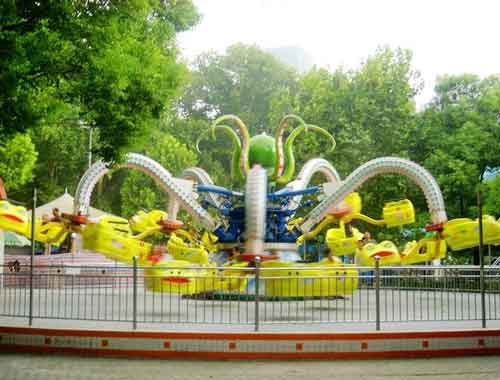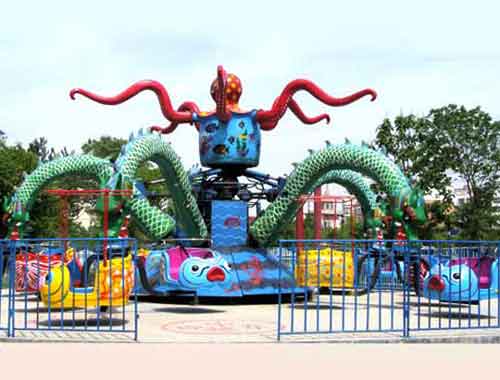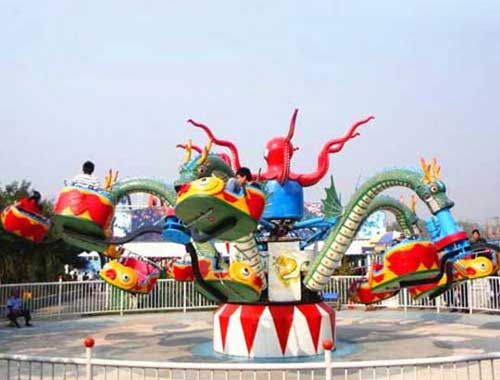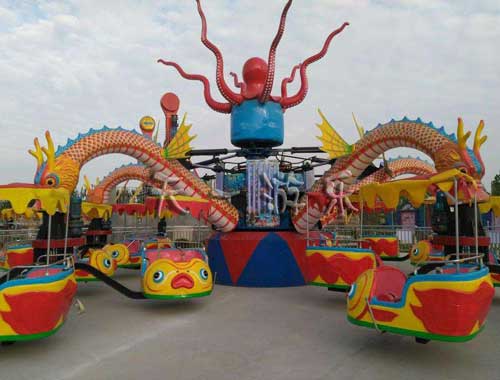
On the surface, carnivals are all about fun. When you look a little bit deeper, however, they also provide a great opportunity for learning. All of the rides at a traditional amusement park or carnival provide excellent real-world demonstrations of the principles of physics in action.
A great example of this can be seen by taking a closer look at the basic working principles of octopus rides. Before you can understand how the laws of physics affect the people on these rides, you first need to understand how they are put together. With interesting design and playing rules, octopus rides for sale has become one of the high profits investment for amusement parks.

With an octopus ride, a series of arms radiate outward from a central axis point. Typically, the ride is designed to look like an octopus, with the body in the middle and the arms reaching outward from the center. At the end of each arm, there is a car attached. If you want know more about this ride, please click this link (https://bestonamusement.com/octopus-rides-for-sale/) to find more.
The ride as a whole rotates around the central axis. As it does, each of the arms moves independently up and down in the air. On most of these rides, the cars where the passengers sit are also designed to rotate. They are connected to the arm with a rotating bearing that allows them to spin around in a circle on their own as they rotate in a larger circle on the arms.

As the ride rotates, the arms exert centripetal force on the cars, pulling them back in toward the center of the circle. Inside the cars, the passengers are experiencing a somewhat different sensation. You can visit a large amusement rides manufacturer to see this ride on the spot.
Newton’s First Law states that objects that are currently in motion have a tendency to want to stay in motion. As the body of a passenger begins accelerating, it naturally wants to move forward in a straight line. The centripetal force pulls them back in toward the center of the ride, however, causing them to move in a circular path rather than a straight line. If you are interested with some amusement rides like this ride, please click here: www.BestonAmusement.com

At the same time, they experience a phenomenon known as centrifugal force. Although this technically isn’t a true force, it creates the sensation of their bodies sliding outward toward the outer edge of the car, away from the center of the circle. This is caused by the conflict between the centripetal force pulling their bodies toward the center of the circle and the tendency of their bodies to want to move in a straight line in accordance with Newton’s first law.
Things become even more complicated when you take into account the individual spinning motion of the cars on the end of each arm. Along with all of the forces that are being applied to the passengers by the larger ride, they are experiencing additional centripetal force from the spinning motion of their individual car.

Finally, the up-and-down motion of the arms also introduces gravity into the mix. This force pulls their bodies back toward the ground as they are lifted up into the air by the arms.
As you can see, the working principles of octopus rides are quite complex. After getting a deeper understanding of the physics, however, you can really feel all of the different forces at work when you ride on one of these rides.
